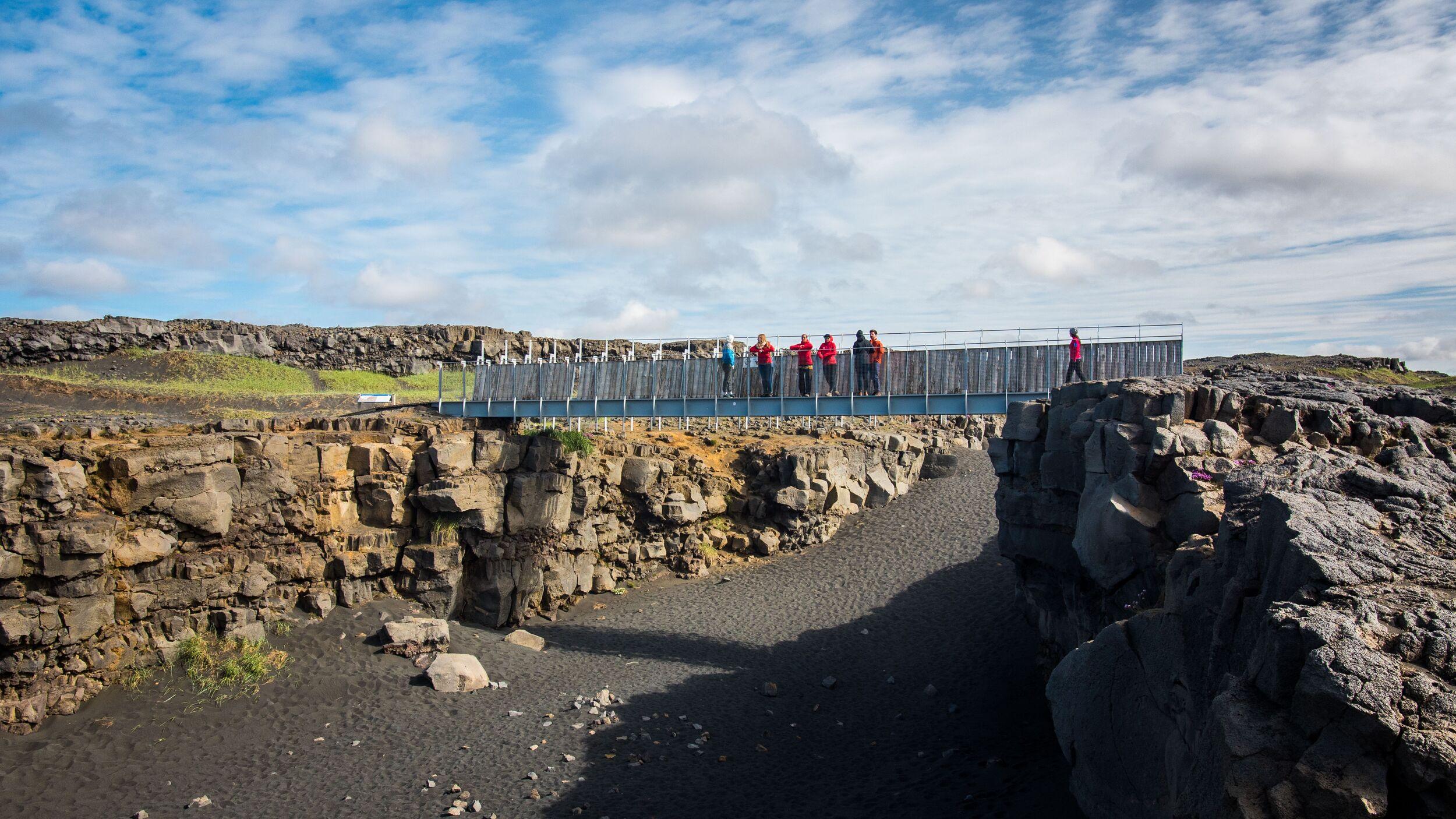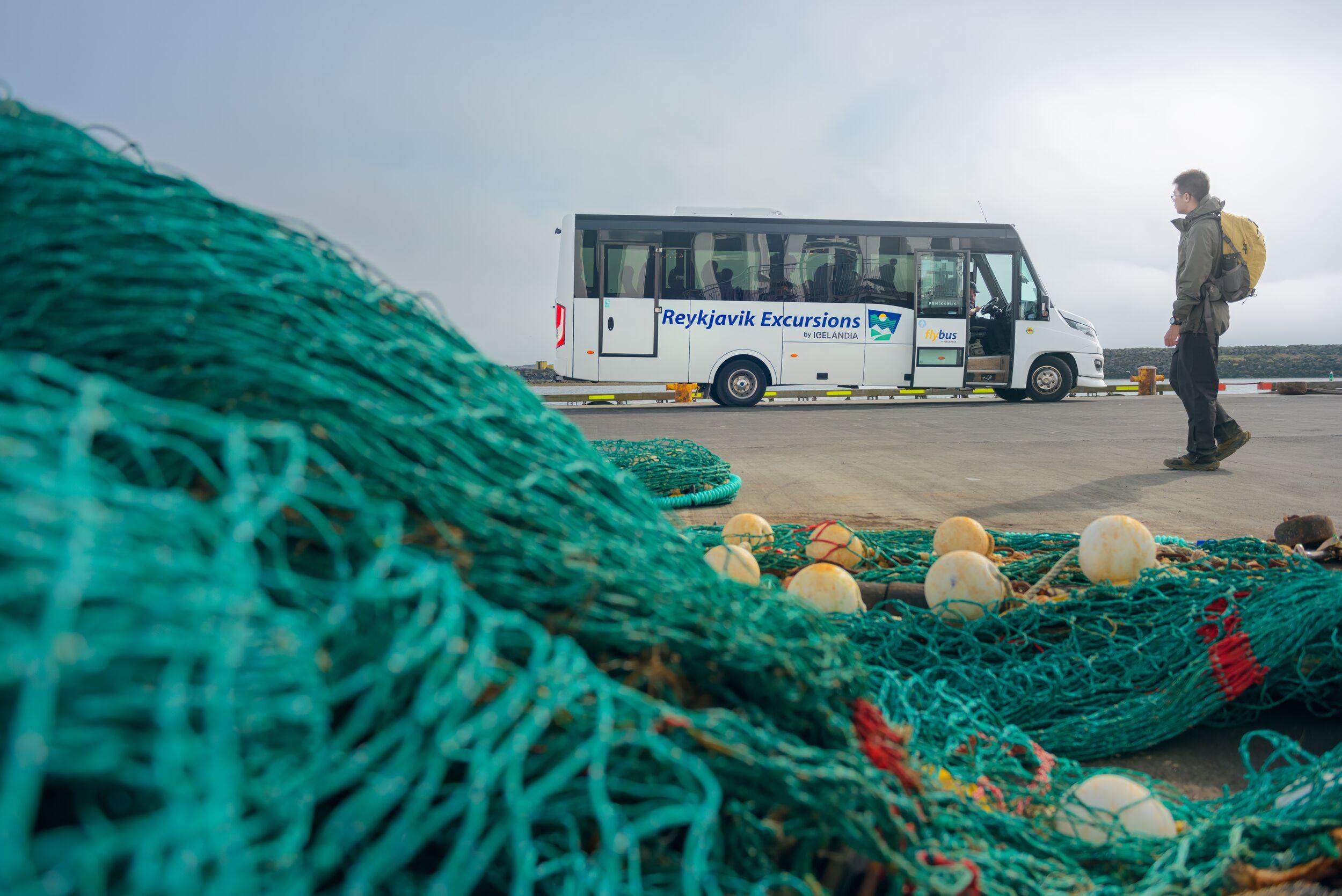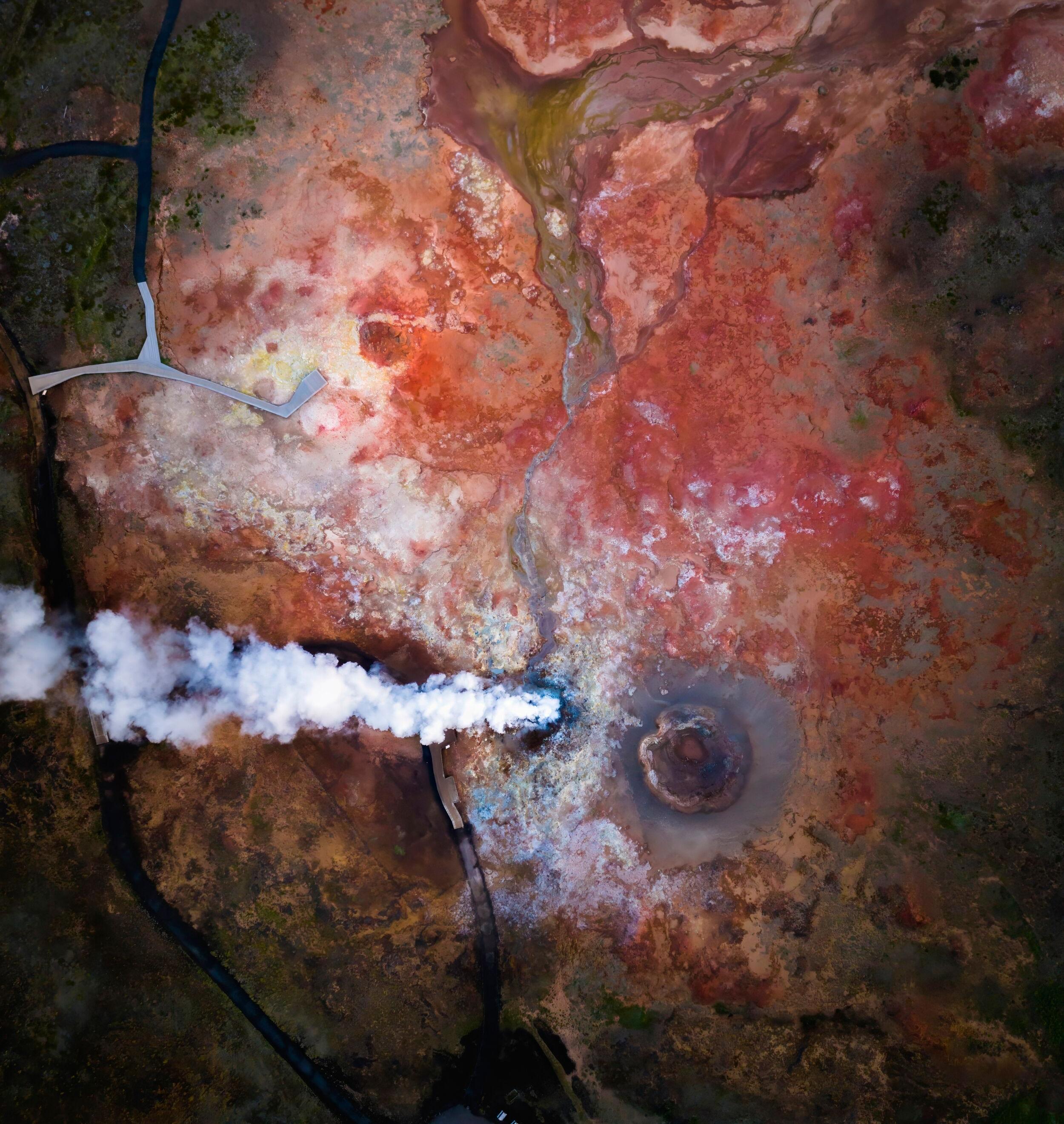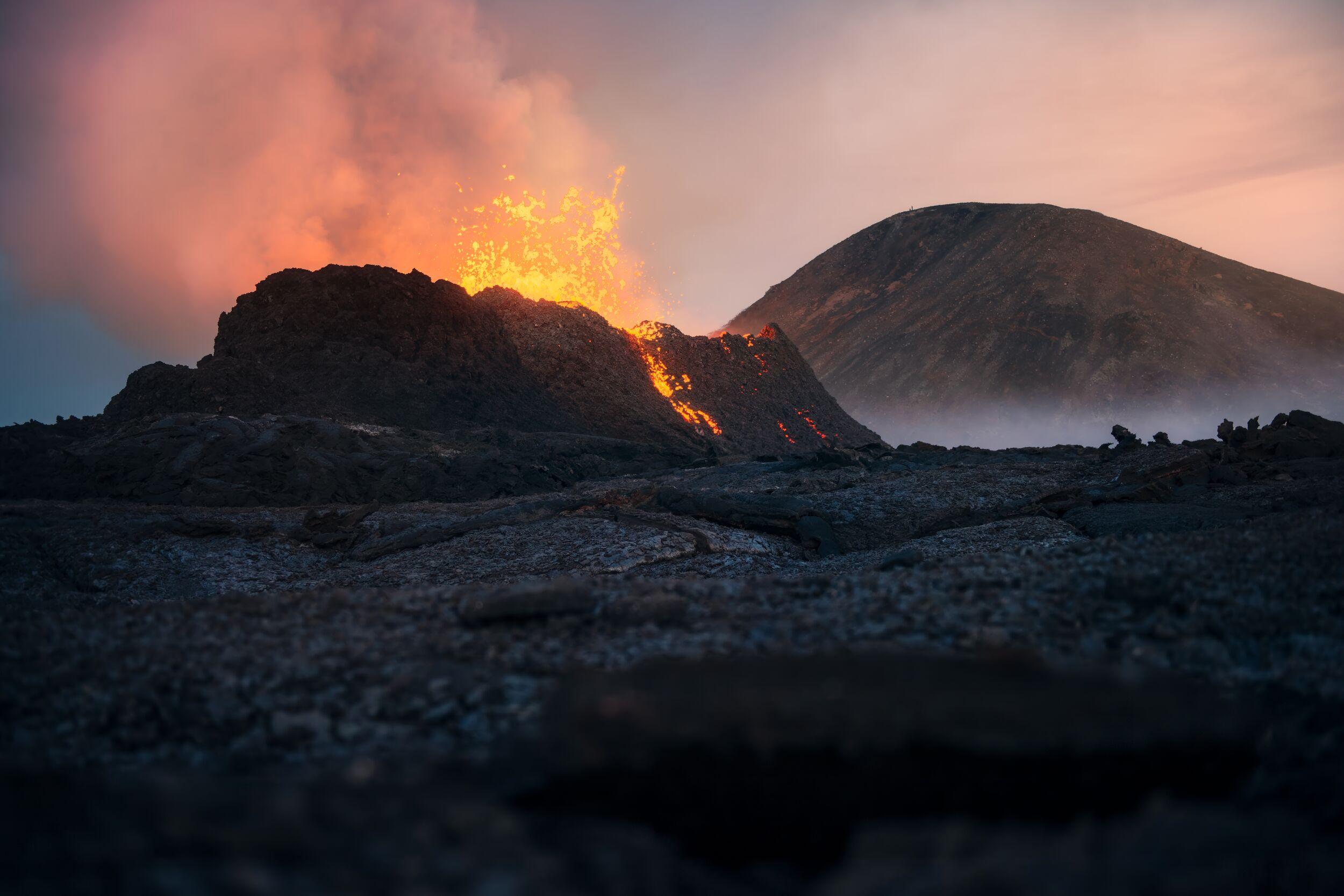
- Best time to visit
- All year round
- Coordinates
- 63.81921770298559, -22.684598884212733
- Distance from Reykjavík
- 64km (39mi)
Gunnuhver
One of Iceland’s most active geothermal areas, Gunnuhver, is evidence of the heat from the Earth’s interior getting close to the surface. The geothermal activity results in intense steam emissions and bubbling mud pots. The area showcases the geothermal forces that shape Iceland’s unique landscapes.
The most prominent feature of Gunnuhver is its powerful steam vents, which emit columns of steam into the air. These vents are caused by the interaction of water with the hot rock below the Earth’s surface. Bubbling mud pots are another fascinating aspect of Gunnuhver. These are created when hot water mixes with minerals in the ground, creating a mixture of mud that bubbles due to escaping gases.
There are also several hot springs in the Gunnuhver area, where you can observe boiling water emerging from the ground. The water’s temperature can be scalding, so staying on marked paths and designated viewing areas for safety is crucial. All have respect for Iceland’s nature when exploring.

Geology Meets Icelandic Folklore
In addition to the obvious geological appeal, Gunnuhver has some interesting folklore attached to it. The name Gunnuhver is derived from a legendary ghost, “Gunna”, in Icelandic folklore, adding a touch of mystique to the site. Gunna is said to have lived during the 18th century, and according to local legend, Gunna was a troublesome spirit who wreaked havoc on the surrounding area. Her name has been connected with the geothermal area due to its mysterious and otherworldly qualities.
Reykjanes Peninsula
Gunnuhver is easily accessible by car and is located near other attractions on the Reykjanes Peninsula, such as the Blue Lagoon and Keflavík International Airport. Marked paths guide travellers through the area, ensuring their safety and preserving the delicate geothermal environment.

Seltún: a colorful geothermal marvel on Reykjanes Peninsula
A short distance from Gunnuhver is another geothermal area with impressive steam vents and hot springs called Seltún. The Seltún geothermal area, also known as Krýsuvik, is popular among geology buffs and hikers. Gurgling mud pools bubble from the yellow, red, and orange clay-like Earth, intertwined with dancing steam and hot springs. Many short walking paths make you feel lost in the outer space like atmosphere. The region gives you a great sense of Iceland’s raw, natural geothermal energy, which powers much of the island.
Seltún is a geothermal area located on the Reykjanes Peninsula in southwestern Iceland. It’s renowned for its colourful and otherworldly landscapes, featuring hot springs, mud pots, fumaroles, and geothermal phenomena. Seltún offers visitors a chance to experience the dynamic geological forces that shape Iceland’s unique landscape.
The Reykjanes Peninsula is home to a striking, dramatic landscape comprising lava fields, volcanic craters, geothermal waters and hot springs, and lava caves. The region is also a hotbed for outdoor activities, including ATV riding, horse riding, and bathing in hot springs. Several other attractions and points of interest close to Gunnuhver are worth visiting when spending time on the Reykjanes Peninsula.

Blue Lagoon
Built on an 800-year-old lava field, the Blue Lagoon covers an area of 8,700 square meters (93,646 sq ft) and draws visitors from around the world to soak in its gloriously milky-blue waters amid a dreamlike atmosphere. The geothermally heated water ranges between 37-39°C and is heavenly any time of year. Enjoying the steamy air while soaking during the summer is lovely, especially on sunny days. And in the winter, a visit here is eerie and fantastic; watching as snow falls from the jet-black December sky or as northern lights dance across it while lounging in hot water is sublime.

Reykjanesviti Lighthouse
This iconic lighthouse is located near the southwestern tip of the Reykjanes Peninsula. It offers sweeping views of the coastline and the surrounding ocean. The area around the lighthouse is also known for its rugged cliffs and birdwatching opportunities.

Bridge Between Continents
Travellers can visit a spot where the Mid-Atlantic Ridge crosses Iceland, the meeting point of the Eurasian and North American plates. The small footbridge is a symbolic site connecting the two land masses, offering visitors an impressive view of the ridge. You can reach the bridge from Route 425, a 20-minute (20 km) drive south from Reykjanesbær.
Krýsuvíkurbjarg Cliffs
These cliffs are known for their stunning coastal scenery and abundant birdlife, including nesting seabirds. The ridges are particularly impressive when viewed from the sea during a boat tour.

Kleifarvatn Lake
This picturesque lake is the largest on the Reykjanes Peninsula, surrounded by volcanic landscapes and offers opportunities for hiking and enjoying the serene surroundings.
Icelandic Museum of Rock’ n’ Roll
The Icelandic Museum of Rock’ n’ Roll is a perfect stop for those who love the music of Björk, Sigur Rós, Kaleo, and Of Monsters and Men, and are interested in learning about other rock and pop acts from Iceland. Visitors can listen to the music of local artists, see instruments, and check out costumes worn by well-known local musicians, including one of Iceland’s biggest pop stars, Páll Óskar. Guests can also learn about the histories of some of the island’s most popular bands and singers. Interactive displays include a sound lab where you can have a karaoke-style sing-along or play drums, guitar, or bass.

Reykjanes Maritime Museum
The Reykjanes Maritime Center houses 100 model boats built by a retired local sailor, Grímur Karlsson. Models on display include masted schooners of the mid-19th century and steam-powered trawlers of the 20th century. Information is available on the types of boats and when they were used.





